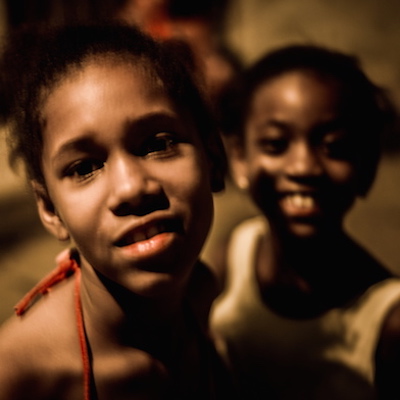My daughter-in-law recently took my grandson to a sensory-friendly theater, where kids who are susceptible to sensory input, or who have trouble sitting still for long periods, can enjoy a movie in a safe, comfortable environment. The lights and sound are adjusted, and the kids can get up and move around whenever they want.
Sensory-friendly activities are becoming more and more commonplace, from skating rinks and indoor play-zones, to adapted Broadway shows and Major League ballgames.
It’s as though too much of anything can overload these kids’ circuits. But which came first? Are they being born with heightened senses, or have we created a world that blasts away at all of us, and most of us have desensitized in order to cope?
When I was pregnant in the late 70s, it was common to choose a homebirth, including the (Frederick) Leboyer Method. It minimizes discomfort for the newborn through low lighting, a quiet room, soft voices, no drugs if possible, and a “Leboyer bath” to ease the transition into the outside world. Then many of us went on to raise our kids similarly, allowing a natural growing experience through schools like Montessori and Rudolph Steiner.
I tried to do a homebirth but ended up in the emergency room with a C-section. Afterwards, I felt bad that I hadn’t been able to keep it calm. So I doubled-down, by not taking my infant son out of the house for the first month and by holding him practically round the clock for the first year.
Some people thought I was extreme, but it’s what my heart was telling me to do. I felt intuitively that it wouldn’t create a dependency, that he had a need for a lot of physical exchange, and that it would add to his ability to relate, share and love.
Children have the answers we need.
As parents, we have to make zillions of decisions, hoping they’ll be the right ones. And it seems likely that children are capable of helping us, by giving us the answers themselves, by providing signs for what they need from us.
It’s as if they know of a keyhole to a safe place inside themselves. And we have to find the key that fits – and then help them use that doorway, as they need it.
One key for helping these super sensitive kids might be nature, walking in the woods or a park, where they can calm themselves. It might be music – they can give us signs for what type of music they like. It might be beauty – walking around a museum or a flower market. It might be making art, or cooking, or reading, or riding in the car, or swimming, or running – anything that helps them gather and center their own energy.
Children are like sponges.
Kids have to acclimate to a harshness that we’ve created. And they don’t have the buffers in place that we have. They’re wide open, especially in their developmental years.
Maria Montessori said that the mind of a child is “like soft wax, susceptible at this age to impressions, which could not be taken in at a later stage when this special malleability would have disappeared.”
When our kids aren’t doing or feeling well, it could be that they’re picking up something from the environment they’ve been in, or the people they’ve been around. It’s not farfetched to consider, because kids are like sponges, absorbing our words and actions. And their intuitive sides are even soaking up our thoughts and moods. And they’re being affected by all of it.
When we decide to have kids, we know that we have to rein in our emotional outbursts, to set a good example. But we also can’t be haphazard about our thoughts and feelings.
When we’re fearful, or when we’re worrying, even if our concerns are about our kids, they can pick up on it and buy into whatever worst-case scenario we have running in our worried minds.
When kids are trying to figure the world out in their early years, they need to feel safe and secure. So the household norm needs to be supportive – not only the environment, but also the attitudes.
Naturally, there will be moments of chaos. And we have to figure out how to live in this sometimes-crazy world.
I’m somewhat germ phobic, so when my granddaughter was crawling around on a dirty floor, and my son said to me, “She’s building immunities,” I wanted to grab her up and scrub her. But instead I got onboard with his viewpoint. And when he asked me to not put store-bought plastic containers on his wooden cutting board, I reminded him that I was the one who taught him about cooties. When he was young, I wouldn’t let him go to bed at night in his clothes, because they were “filled with world-cooties.”
Centering as a family.
Whatever choices we make and whatever guidance we follow – whether we insist on a sterile environment or we accept that bedlam is inevitable – most important is to create a family culture where everyone knows how to get back to a loving norm as quickly as possible.
When we give the best that we are to our kids, they’re fortified with the best possible buffer, which is unconditional acceptance and love.
And when we encounter a family at a playground or in a store or a restaurant – where a distraught child is struggling to express a need, and the parents are desperately searching for that moment’s answer – our best choice as passers-by is to be understanding and compassionate, to give them all the space and time they need, and to stay supportive in our attitude and our behavior. Because it’s what we all need from each other.
Pic by Parisian artist, Jonathan Kluger.
Read more of Grace’s posts at gracederond.com and follow her on Instagram.


